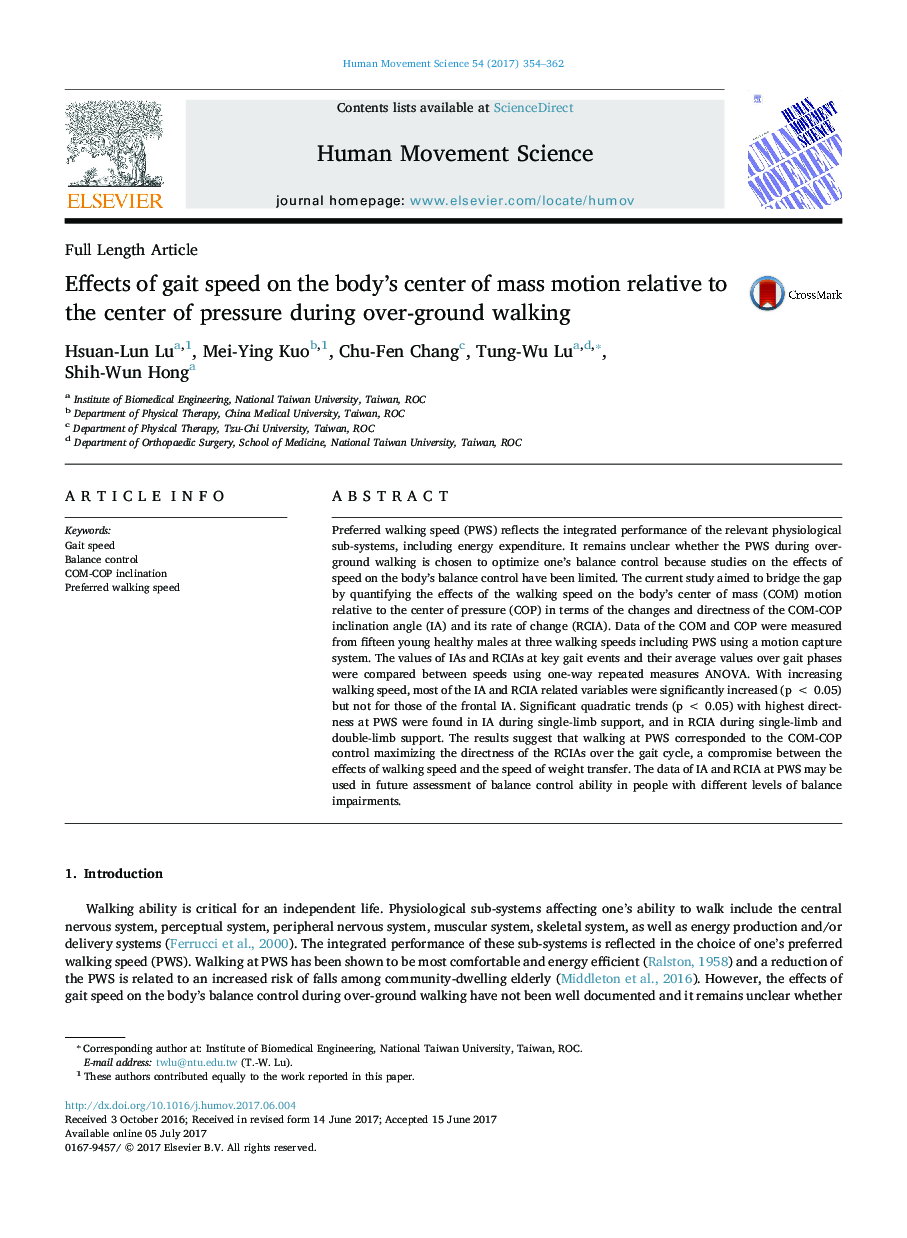| Article ID | Journal | Published Year | Pages | File Type |
|---|---|---|---|---|
| 5041995 | Human Movement Science | 2017 | 9 Pages |
â¢Different gait speeds led to similar COM-COP patterns but different magnitudes.â¢Walking at PWS maximizes the directness of the RCIAs over the gait cycle.â¢PWS best compromises balance control between speeds of walking and weight transfer.â¢Data of IA/RCIA at PWS may be used for the assessment of balance control ability.
Preferred walking speed (PWS) reflects the integrated performance of the relevant physiological sub-systems, including energy expenditure. It remains unclear whether the PWS during over-ground walking is chosen to optimize one's balance control because studies on the effects of speed on the body's balance control have been limited. The current study aimed to bridge the gap by quantifying the effects of the walking speed on the body's center of mass (COM) motion relative to the center of pressure (COP) in terms of the changes and directness of the COM-COP inclination angle (IA) and its rate of change (RCIA). Data of the COM and COP were measured from fifteen young healthy males at three walking speeds including PWS using a motion capture system. The values of IAs and RCIAs at key gait events and their average values over gait phases were compared between speeds using one-way repeated measures ANOVA. With increasing walking speed, most of the IA and RCIA related variables were significantly increased (p < 0.05) but not for those of the frontal IA. Significant quadratic trends (p < 0.05) with highest directness at PWS were found in IA during single-limb support, and in RCIA during single-limb and double-limb support. The results suggest that walking at PWS corresponded to the COM-COP control maximizing the directness of the RCIAs over the gait cycle, a compromise between the effects of walking speed and the speed of weight transfer. The data of IA and RCIA at PWS may be used in future assessment of balance control ability in people with different levels of balance impairments.
